
At one point my plant count maxed around 20 and as I’ve dwindled down to 9 I learned that 20 is beyond my capabilities for giving each plant the best home possible. I can handle keeping 9 alive though and no longer feel the frustration of plants constantly dying on me, especially since understanding the limitations of the living conditions our small apartment provides. Now I know what works for this space, from both the standpoint of design and not killing so many plants. These are all the plants in our home that have survived with me over the years and how to care for them.
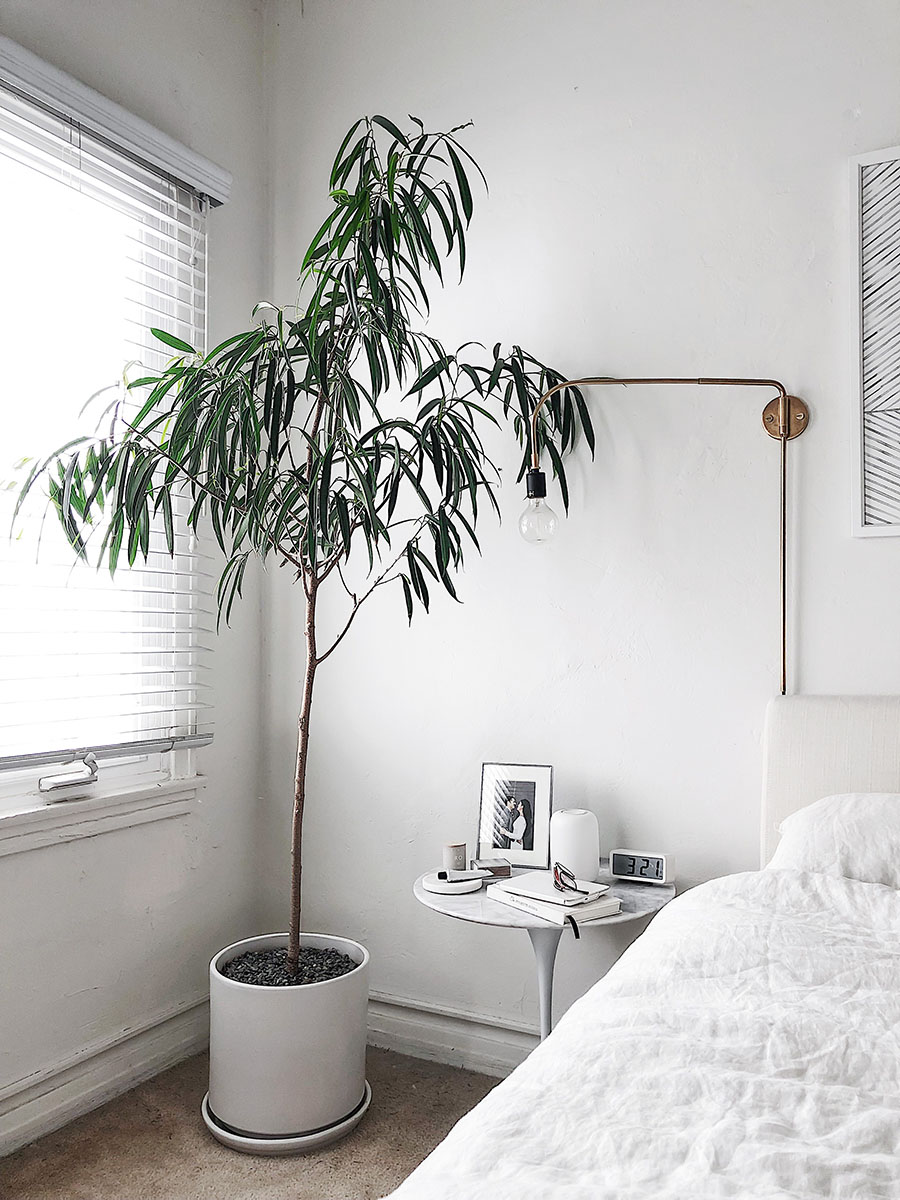
Ficus Alii (Ficus binnendiijkii ‘Alii’)
Light: medium-bright, indirect
Water: Water thoroughly enough to drip down through the drainage hole and allow at least top 2 inches of soil to dry out between waterings.
Humidity: average, household
I try not to play favorites, but this one is my favorite. It single-handedly transformed our bedroom and looks like it was made to live in this spot. I initially had a rough time with it because within days of bringing it home it dropped a lot of leaves. Ficus plants are generally known to be fickle when moved to different conditions and I trusted it was adjusting to its new location. I persisted with recommended care and since then it has flourished. Although to be honest, it probably doesn’t get as much light as it wants in this spot, which would possibly explain why growth has been on the slower side. It can survive in medium light conditions but will just take longer to produce new leaves. I didn’t see any new leaves all of fall and winter and only about a week ago did it burst with a bunch of new growths. Confirmation that I’m not killing it! I rotate it weekly to make sure all sides get the same amount of light.

A note on watering: I use a moisture meter to determine how often I water my plants (you can find the one I use here). Moisture meters are controversial for how accurate they are, but I find it to be a useful guideline especially in deeper pots like this one where I can’t dig down into the soil far enough with my fingers. Every few days I go around to all my plants and insert the meter in different parts of the soil. I try to keep most of them in the “moist” portion of the meter depending on the plant, so this “dry” reading means I need to water this one asap. For most of my plants it ends up being a roughly once a week watering schedule.

Money Tree (pachira aquatica)
Light: bright, indirect
Water: Water thoroughly and allow top 1-2 inches of soil to dry out between waterings. Avoid getting water on trunk to avoid root rot. Water less in winter.
Humidity: moderate to high, above 50%
Our money tree has shown the most growth of all our plants. This might be because it’s located in front of our largest window that provides beautiful bright light in the mornings and bright indirect light for the rest of the day. The general advice with money trees is to avoid direct sunlight as it can scorch the leaves, but that doesn’t seem to be a problem with this window. Our money tree is looking a little leggy and droopy which is expected with this much growth and height, but I’m also suspecting I’ve been overwatering it as I didn’t cut back on the watering over winter. I’ve been quick to remove old leaves and yellowing ones to help promote new growth, and I keep it in a container with drainage holes within this planter so that it can have proper drainage during waterings without sacrificing the cute planter. Hoping I can revive it. It’s the only one right now that isn’t in its best shape and is not good for my plant care reputation but at least I’ve had a few years so far where it’s been growing at a beastly rate.
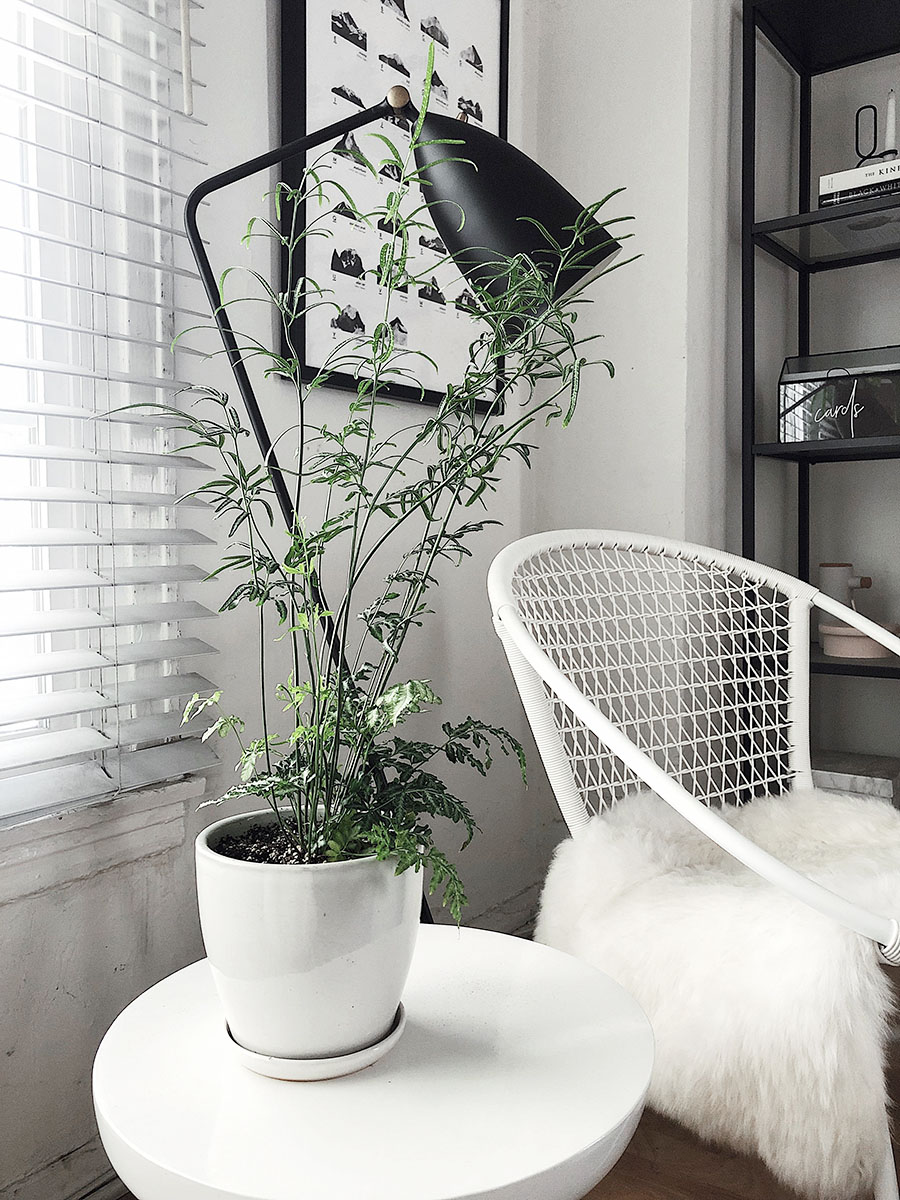
Silver lace fern (pteris ensiformis)
Light: medium-bright, indirect
Water: keep soil moist
Humidity: high, mist it often
The newest plant in our home. I was drawn to the delicate leaves and pretty “silver” variegations on them. The leaves are very thin and delicate and I can imagine they’d curl up and get crispy quick without proper hydration. I water this one the most, somewhere around every 3-4 days to keep the soil moist in addition to misting the leaves daily, although I’ve read misting does nothing but I feel better doing it anyway and that’s worth something isn’t it?? I would probably do better though with a humidifier, which I’ve been meaning to get for so long anyway for a variety of reasons and will do soon.
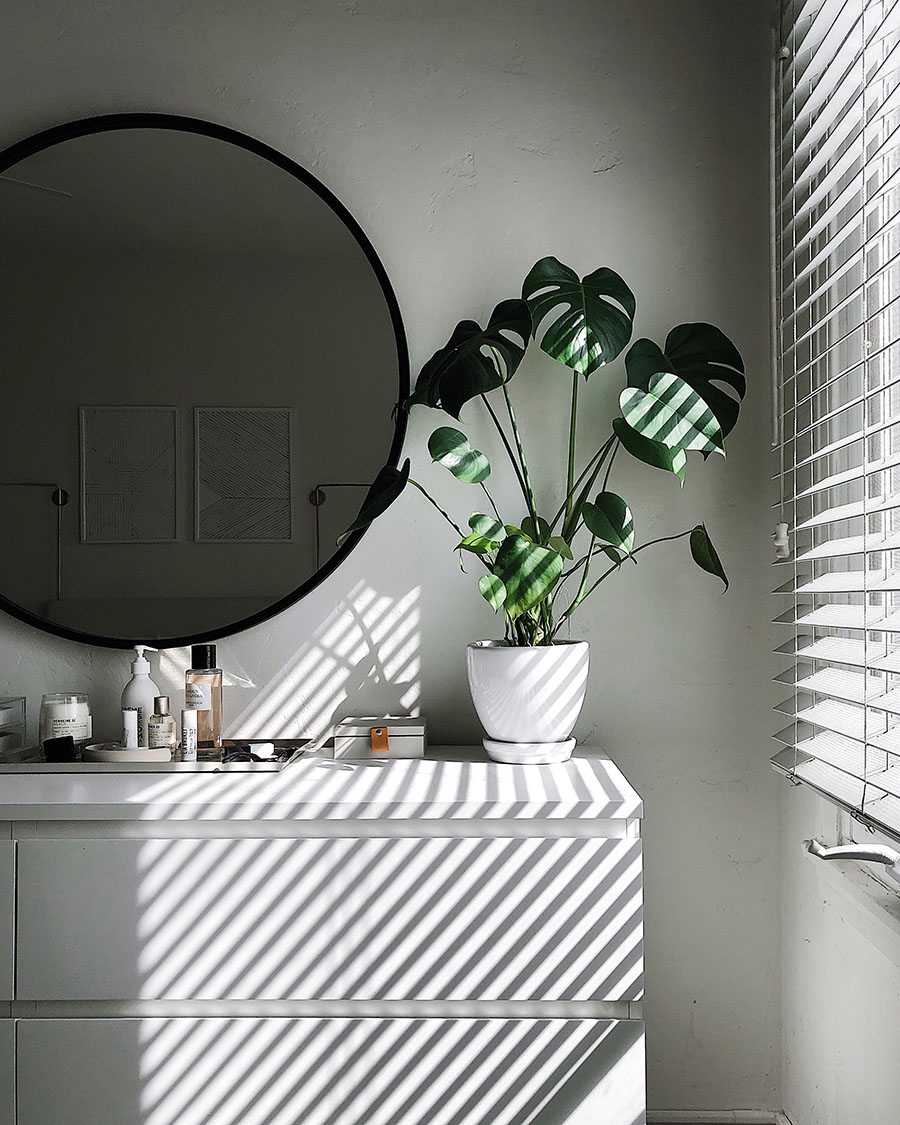
Split-leaf philodendron (Monstera deliciosa)
Light: medium-bright, indirect
Water: Allow top 2 inches of soil to dry out in between waterings and reduce watering in fall and winter.
Humidity: any
This is my second monstera plant and in my experience is one of the easiest to care for. I had to part with my first one because it grew so well and was conquering too much space in our living room. I went smaller with this one and am regularly pruning it to prevent overgrowth, though it is still showing so much growth in only the 1.5 years that I’ve had it. This is a great spot for it as it gets bouts of direct sunlight and indirect sunlight for most of the day. Young monsteras will have mostly solid leaves, and the pretty holes in the leaves (fenestrations) that everyone loves are formed in new growths as the plant ages.
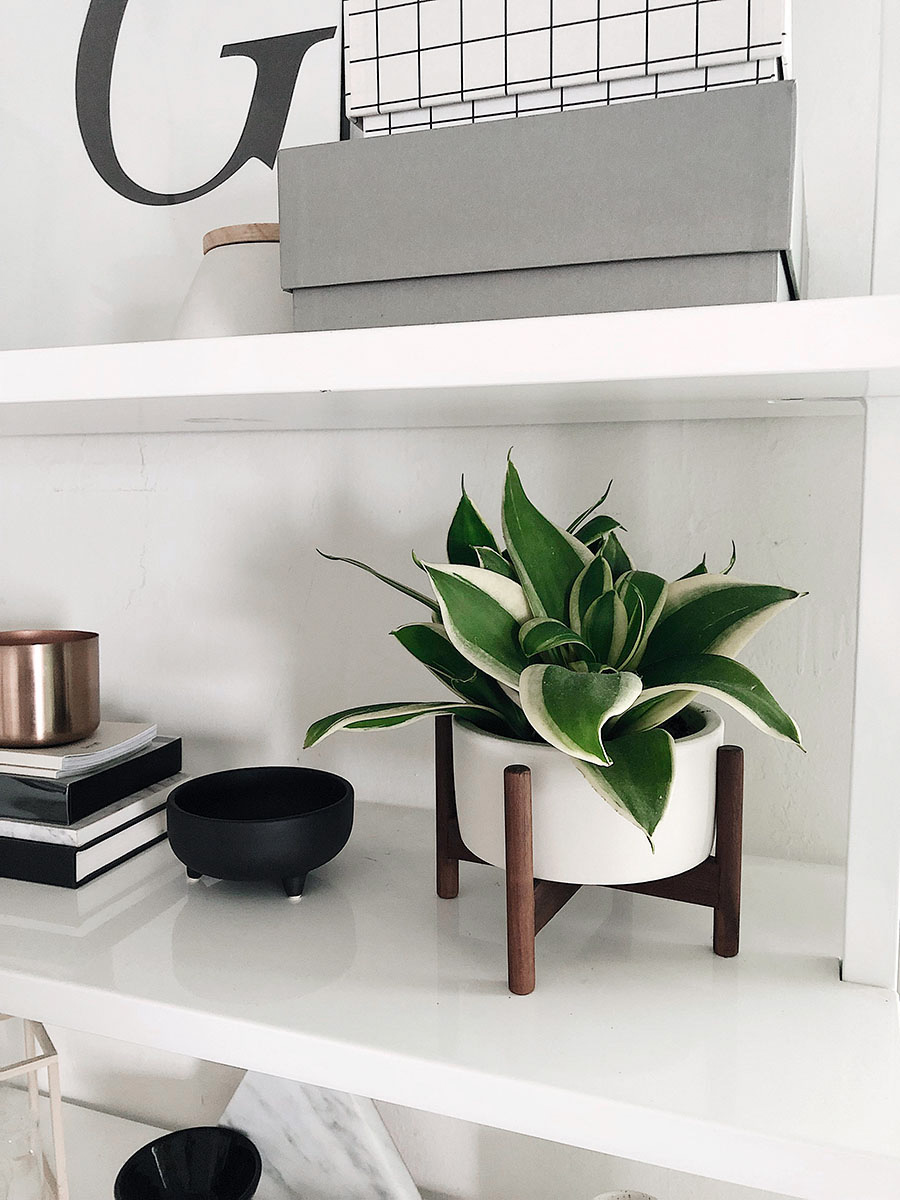
Snake plant (sansevieria golden hahnii)
Light: low-bright
Water: Allow the soil to dry completely between waterings.
Humidity: low
My oldest plant. I believe it’s been living with me somewhere around 5 years. It constantly gets moved around, forgotten about, and neglected, and it won’t die. In fact, it has sprouted two more heads for a total of three now in the same mini planter it’s always been in. Snake plants are known for being very hard to kill and for not needing much light, though I think it can be really misleading when plants are labeled low light and then we wonder why it died in a dark bathroom corner that gets no sunlight. Granted it would die a very slow death, but keep in mind that all plants want light! Still, this one is the easiest plant I have ever had to care for and is far more kill proof than those liar succulents (succulents do awful in our apartment, not enough bright direct light in here). Not ideal that this is in a planter with no drainage, but I make sure to water with a very light hand and it hasn’t been a problem for 5 years!
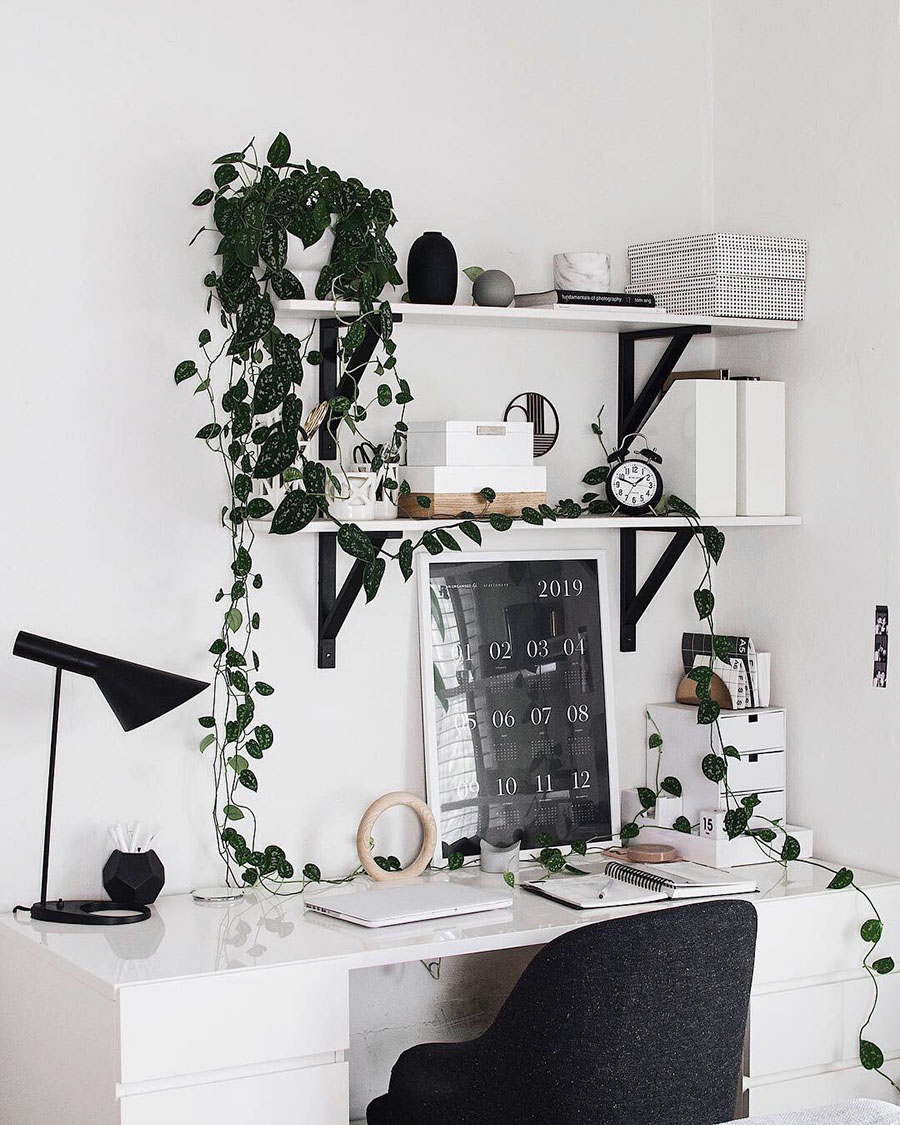
Philodendron silver (SCINDAPSUS PICTUS ‘ARGYRAEUS’)
Light: medium, indirect
Water: In bright, indirect light, water when the soil has dried down about halfway down the pot. In low light, allow to dry completely before watering. Do not keep soil moist.
Humidity: average, household
I had the same plant here before this one that died a horrible death from a fungus gnat infestation and just want to note: if this happens to one of your plants to the point where it’s fully engrossed with these monsters, don’t try to save it. Get rid of it before the gnats migrate to your other plants and start killing them too, it’s for the best I promise. I love this one particularly for the spotted variegations on the leaves and knew that these vines would look so beautiful draped here on the shelves over my desk. It would grow more full if it were in a spot that got more light, but the growth is still there nonetheless. Because it lives in low light I water it less, somewhere around every 10-12 days. When the vines get too long, I cut them shorter right above a node where new growth will start so that I’m not creating any stumpy ends.
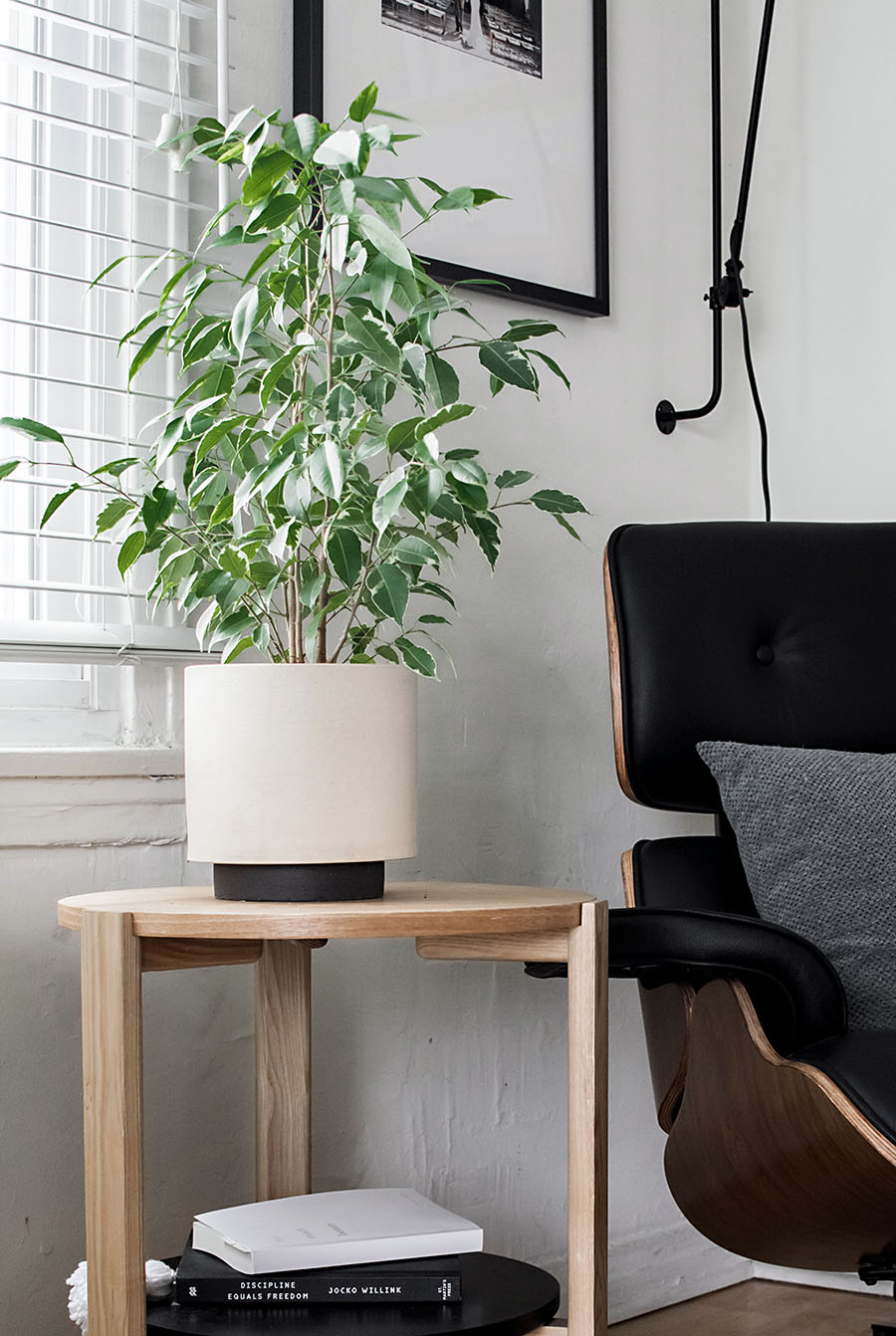
Weeping fig (Ficus benjamina)
Light: bright, indirect
Water: Let top inch of soil dry completely between waterings.
Humidity: moderate to high, mist regularly
I dream that this fig will grow into a big beautiful tree. For now, its adorable size is perfect for this side table that luckily sits in front of a window which could afford to bring in more light but is good enough for now. Looks like I have an affinity for ficus plants for their tree-like appearance, and I do see across all of them that they communicate by dropping their leaves. I had a similar event like my ficus alii where when I brought this home it dropped a bunch of leaves, but now it’s fine and growing fast. I also seem to be really into leaf variegations as that’s what drew me to this particular one.
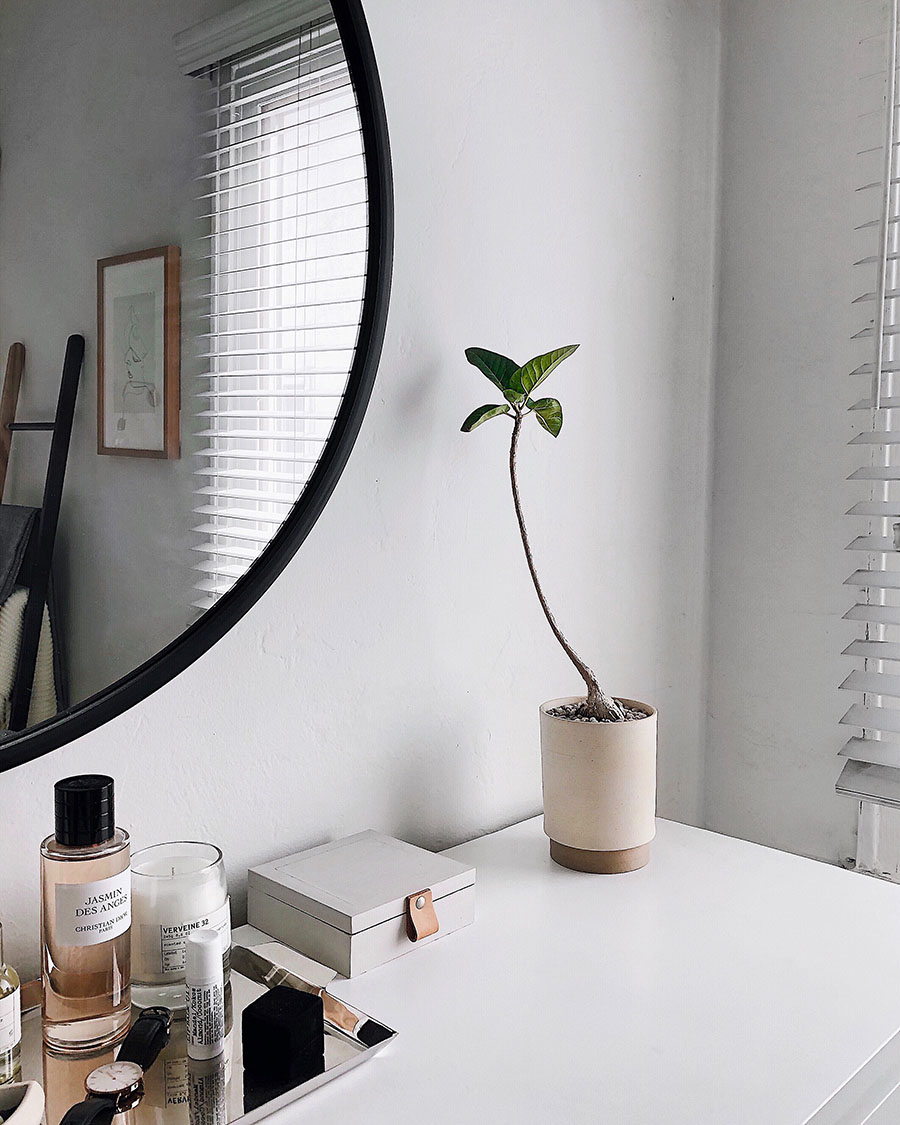
Rock Fig (Ficus palmeri)
Light: moderate, indirect, partial shade
Water: Let soil dry completely between waterings
Humidity: dry
This is a fun one. Haven’t come across anything like it before and also couldn’t find much info on it, but I’ve been caring for it per the instructions it came with which is to water moderately and keep it in very well-drained soil. Like all my other ficus plants, it dropped leaves once I brought it home, but now it’s growing two more and returning to its adorable 4-leafed form. I’ve since learned these are from the Baja California peninsula of Mexico and are one of the few figs that have adapted to dry climate. The roots extend and grow over rocks in search of water, hence being called the rock fig. I’ve also come across another source that said to water thoroughly and often for maximal growth, which is opposite of what I was told to do when I got the plant, but I guess we’ll see how I do!
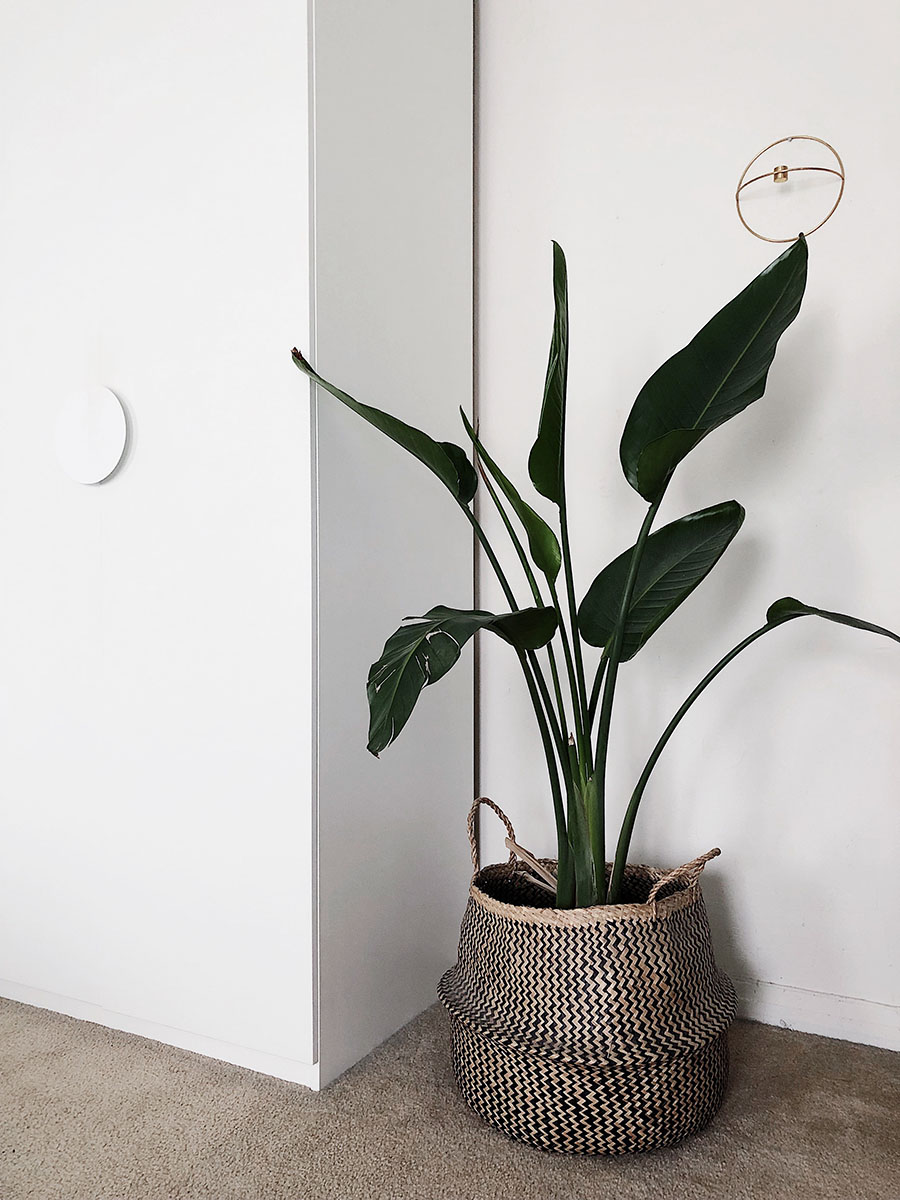
Bird of Paradise (strelitzia)
Light: very bright, direct
Water: Keep soil moist but not soggy.
Humidity: average, household
This plant should not be alive. This is the only plant I own that needs very bright direct sunlight and it gets the least amount of light out of all my plants. It sits the furthest it can possibly be from the window in this room because I selfishly like the way it looks here. It had two other main stems that shriveled up and died, leaving these two that have survived for 3 years now and produced new leaves. Could it be that it successfully adapted to the low light conditions? Granted three new leaves over 3 years is pretty slow growth, but it’s incredible to me that otherwise it looks completely fine. So this is a “don’t do what I did” moment while also showing that doing what I did turned out ok… Luckily I like a more sparse look for this plant but if you want big full clusters of leaves, keep it in the brightest light possible.
For the most part, theres a general care protocol that’s pretty much the same across all house plants. Water thoroughly, have drainage holes in your planters to compensate for overly thorough watering, wait for the top inch or two of the soil to dry between waterings, and provide sufficient light. Water on the normal schedule during growth seasons (roughly spring and summer) and cut back during dormant/slower growth seasons (roughly fall and winter depending on local climate and plant).
Apartment living often means low light, which in my case I’ve seen it result in slower growing plants, but plants that still grow nonetheless. I actually don’t mind this effect at all because I’d be perfectly fine if all our plants stayed the same size- space is limited here! It also means that forgetting to water sometimes has been forgiving since slower growing plants don’t require as much water. This is all my best guess for why I’ve been able to keep all our current plants alive. Luck could definitely be at play here too, who knows.
I don’t mess with fertilizer at all ever though all my research touts it as an essential part of plant care, but so far it doesn’t feel like its been necessary. I read a lot about how it will aid in faster and bigger growth in plants but with that not being my goal for plants in our small home + all of our plants doing fine for years now, I’m not tempted to start fertilizing, but I probably should. Would like to get your thoughts on this.
That’s the gist of how I’ve kept these plants alive! If ever it looks like a plant isn’t doing well, I Google the symptoms and it’s always one of or a mixture of reasons including too much water, not enough water, too much light, or not enough light. It can feel like a guessing game with contradictory answers when you’re in plant revival mode, which makes it that much more rewarding when you figure out what your plant needs and make it happen. And when that new leaf grows… that’s how I ended up with 20+ plants that one time. It takes all my strength to not stuff our home with plants, as much as I care about giving each one the space to shine and be properly taken care of. Writing this post is also growing my itch to bring more plants home. I have so much plant love to give!!


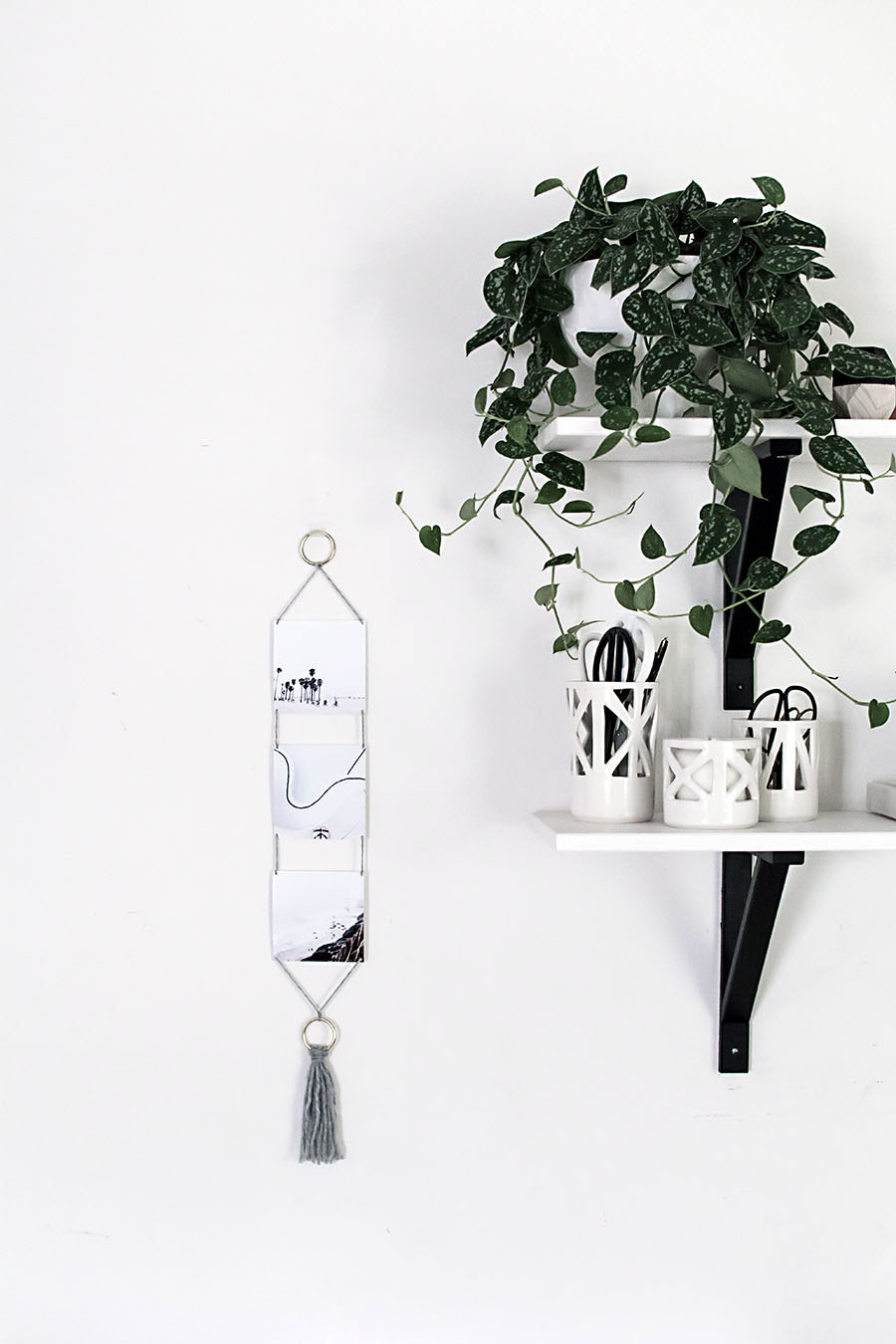
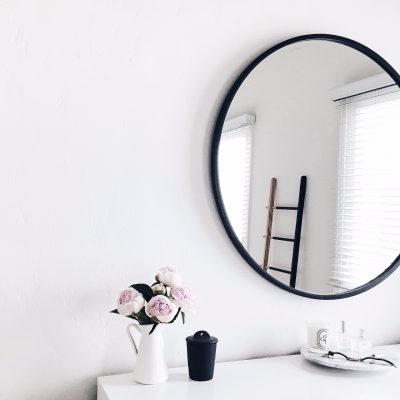

Gosh, i love those cream planters, they beautifully compliment all of your plants. I’m about to move out so having plants in our house is not an option since we’ll be moving around a lot but i’ love me some greens, so a little while ago, i foraged a couple of branches with little green leaves, put them in a vase with NO water & waited, it’s like they froze in time, leaves are dry & curled but haven’t turned yellow. Love ur blog, btw ;)
Love love love these!
Hi Amy! Is the white planter that houses your monstera deliciosa from The Sill? If not, would you mind sharing where you bought it? Thank you!
Hi Tracy, the planter is from a local nursery. I have my eye on the planters from The Sill though, they look nice!
I need to up my plant game now! Beautiful and great tips thank you :)
Tanya
https://twelveoeightblog.com
Your plants are beautiful and healthy additions to your home. Thanks for the practical tips. I like your placement choice for the Bird of Paradise. It looks good so it must be happy.
Speaking of placement: it seems to me that your coffee table is way too far from your sofa to serve a practical purpose. Isn’t that the point of having one?
Your spaces remind me of how subjective decorating choices are. Perfect for what you feel good in. For me, the lack of color would not feed my heart with joy, even though the sereneness might be calming. At the other end of the spectrum, most of the bohemian spaces and crowded rooms I see on the Internet jangle my senses and make me antsy.
Alas, to each his/her own.
The coffee table distance has been that way for years in our home and works great for us. I haven’t felt at all that it’s too far. As you said, to each his own.
I love all of these plants & tips to care for them! Here’s some of my favorite plants: Macrame and Plant 101 with Arhaus and Mint Studio